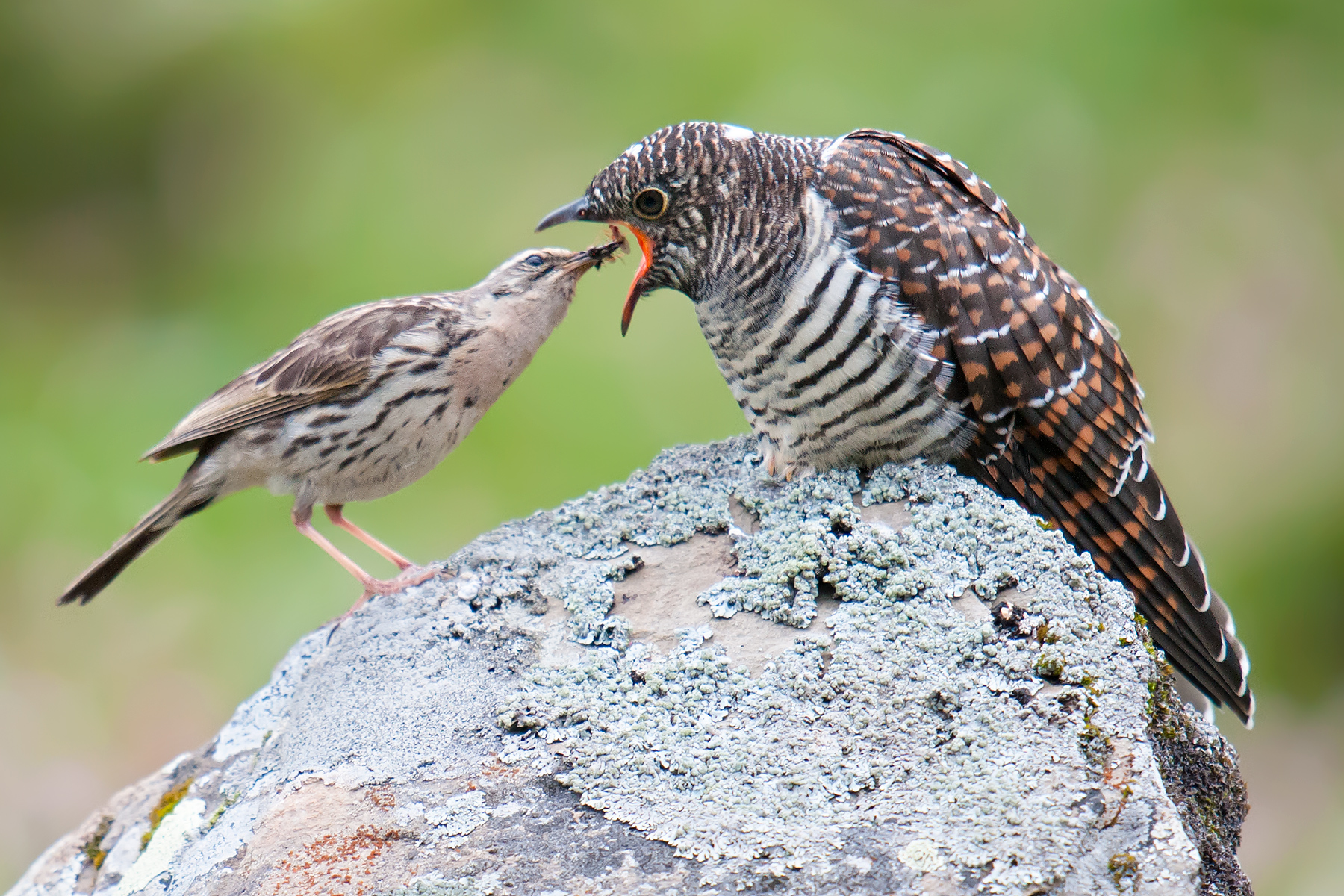
by Craig Brelsford
Founder, shanghaibirding.com
Common Cuckoo Cuculus canorus breeds throughout China except western deserts and Hainan. In Shanghai breeds Cape Nanhui. Three ssp. in China: nominate Altai Mountains in Xinjiang and across eastern China, subtelephonus Xinjiang to central Inner Mongolia, and bakeri on Tibetan Plateau in Qinghai, Tibet, Sichuan, and Yunnan. ID & COMPARISON Of the five similar Cuculus cuckoos in China (Common, Oriental, Himalayan, Indian, and Lesser), Common is largest, but size alone rarely enough for positive identification. Best differentiator is voice, and Common is instantly recognizable, the disyllabic KOO-koo being one of the best-known bird sounds. Usually silent outside breeding season, making identification difficult. All five long-tailed and slender, with adults grey-hooded and having similarly colored grey upperparts. Tail darker than upperparts, approaching black, with some white spotting. Underparts whitish, with black bars (fainter on lower belly and vent). Legs short, yellow; wings long, pointed. All are insectivorous, with caterpillars in particular being taken, and in their rapid flight these cuckoos can be mistaken for a falcon or hawk. All are brood parasites and secretive forest dwellers; note however that whereas Common favors more open habitats and is often conspicuous, Oriental–Himalayan almost always prefers deep forest and is rarely in the open. Common most closely resembles Oriental and Himalayan; like them, and unlike Indian and Lesser, Common has a grey rump that contrasts with darker tail. Bars of Common often appear thinner than Oriental–Himalayan, and vent usually whiter (often buffish in Oriental–Himalayan). Female similar to male, sometimes with rusty tinge to breast sides; in hepatic morph, upperparts are rust-colored and heavily barred; unlike Oriental–Himalayan hepatic, Common lacks barred rump. Juvenile distinguished from hepatic female by darker hood and grey-brown upperparts with brown barring on wings and mantle. Juvenile also has white nuchal patch. Juvenile extremely difficult to distinguish from juvenile Oriental–Himalayan; one indicator may be species of foster parent. In China, Common Cuckoo parasitizes nests of Acrocephalus warblers, accentors, and pipits. BARE PARTS Bill yellow at base, with black tip; iris and eye-ring yellow, less dark than Indian Cuckoo.
PHOTOS



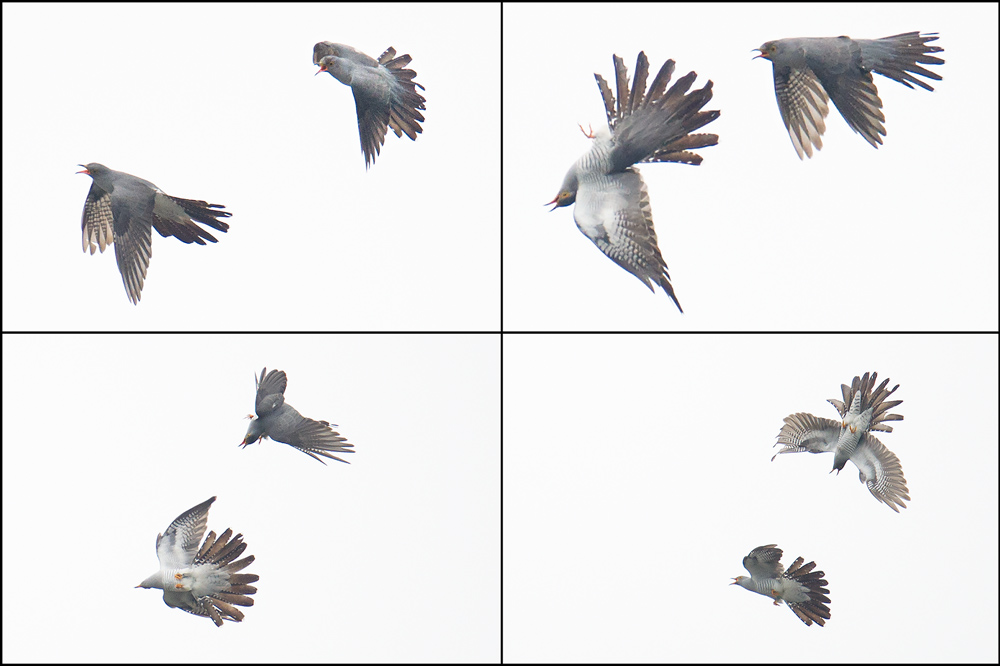
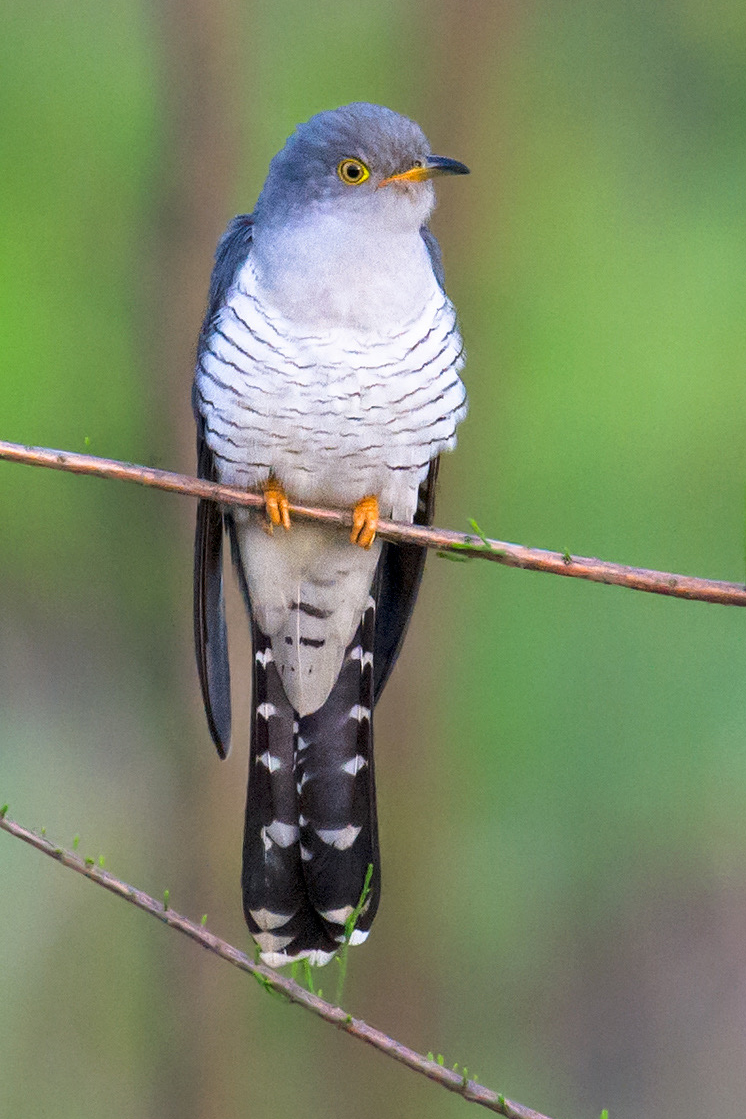


SOUND-RECORDINGS
Common Cuckoo Cuculus canorus canorus, snatch of song and cough, Cape Nanhui, Shanghai, May, by Craig Brelsford (0:03; 890 KB)
Common Cuckoo C. c. canorus, song with song of Oriental Reed Warbler in background, Cape Nanhui, Shanghai, May, by Craig Brelsford (0:44; 2 MB)
RESOURCES ON CUCKOOS

The Cuckoos of Shanghai: Craig Brelsford examines the Shanghai-area parasitic cuckoos and teaches you how to tell them apart. The non-Cuculus parasitic cuckoo that one is most likely to see in Shanghai is Large Hawk-Cuckoo. Rufous Hawk-Cuckoo, Asian Koel, and Chestnut-winged Cuckoo also are occasionally noted.
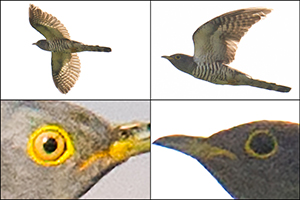
Indian Cuckoo & Common Cuckoo: A Comparison: Note the smaller size of Indian Cuckoo, its thicker barring, and its darker iris. Voice as always is the surest differentiator. Both Indian Cuckoo and Common Cuckoo occur on passage in Shanghai and breed in the region.

Why This Cuckoo Is Lesser Cuckoo: The Cuculus I saw at Shanghai’s Cape Nanhui in September had the dark eye, well-defined and widely spaced barring, and small size suggestive of Lesser Cuckoo. See my photos of the thrush-sized cuckoo.

My Exchange with a Reader About Cuculus Cuckoos: “Draw a circle around the five [Cuculus] cuckoos [of China],” Craig Brelsford instructs a shanghaibirding.com reader. “Within that circle, draw three circles: one around Indian, one around Lesser, and one around Common, Himalayan, and Oriental.” Using this method, one quickly clusters the three main groups of Cuculus in China.
THE CUCKOOS OF CHINA
shanghaibirding.com covers every species in the order Cuculiformes in China. Click any link:
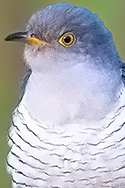
Greater Coucal Centropus sinensis
Lesser Coucal C. bengalensis
Green-billed Malkoha Phaenicophaeus tristis
Chestnut-winged Cuckoo Clamator coromandus
Jacobin Cuckoo C. jacobinus
Asian Koel Eudynamys scolopaceus
Asian Emerald Cuckoo Chrysococcyx maculatus
Violet Cuckoo C. xanthorhynchus
Banded Bay Cuckoo Cacomantis sonneratii
Plaintive Cuckoo C. merulinus
Fork-tailed Drongo-Cuckoo Surniculus dicruroides
Large Hawk-Cuckoo Hierococcyx sparverioides
Common Hawk-Cuckoo H. varius
Rufous Hawk-Cuckoo H. hyperythrus
Hodgson’s Hawk-Cuckoo H. nisicolor
Lesser Cuckoo Cuculus poliocephalus
Indian Cuckoo C. micropterus
Himalayan Cuckoo C. saturatus
Oriental Cuckoo C. optatus
Common Cuckoo C. canorus
ACKNOWLEDGEMENTS
Daniel Bengtsson served as chief ornithological consultant for Craig Brelsford’s Photographic Field Guide to the Birds of China, from which this species description is drawn.

Craig, I especially enjoy and appreciate your in-depth description of the Cuckoo from an East Asian perspective. The pictures are phenomenal, and I love the sound-recordings, especially the cough. Amazing post, keep it up!